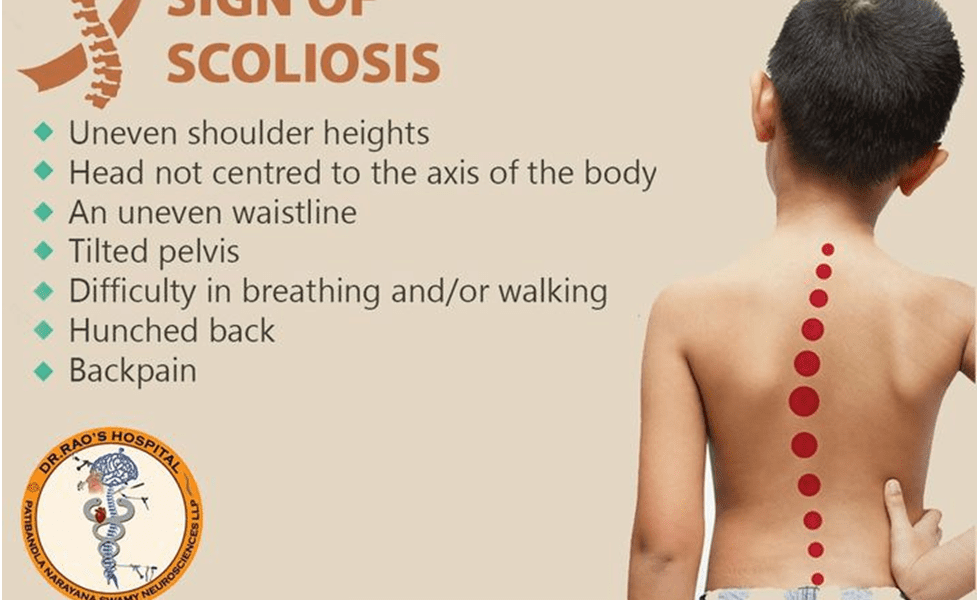The Best Spine Surgery treatment For Scoliosis in Guntur
I. Introduction
Scoliosis affects the spine of any age. Scoliosis can occur in children and adults, and there are many causes and symptoms to be aware of in the general public. Scoliosis is often diagnosed in adolescents and is a sideway curvature of the spine. The cause of scoliosis is unknown in most adolescents. Based on the curvature they are classified as mild, moderate or severe and worsen the curvature as the child grows. Severe curvatures restrict space for the lungs and decrease functional capacity. Children with gentle curvature can be followed with x-rays, but severe scoliosis needs bracing or surgery. Our experienced neurosurgeon and spine specialist will work with you to find the best treatment option for your condition. If you’re looking for the best spine surgery center for scoliosis, look no further than Dr. Rao’s hospital. Call us today to schedule a consultation.
II. Clinical
A. What is scoliosis?
1. Scoliosis is a condition that affects the spine and is a sideway curvature.
B. The causes of scoliosis
There are many unknown causes of scoliosis; some include genetics because it runs in families, injuries like congenital disabilities or infections, surgery on the chest during infancy, spinal cord abnormalities, and muscular conditions like dystrophies or developmental disorders like cerebral palsy.
C. The symptoms of scoliosis
- One shoulder blade is prominent
- Uneven waist
- Uneven shoulders
- One side of the rib cage forward
- One hip higher than the other
- Bending of the back leads to one side prominence of the back
- Twisting of spine
D. The signs of scoliosis
1. There are many signs of scoliosis, including curvature of the spine, an abnormally shaped neck, or an abnormal posture.
E. The diagnosis of scoliosis
The diagnosis of scoliosis is made by history and a physical exam along with x-rays, MRI, or 3D CT scans.
F. The treatment of scoliosis
- The treatment of scoliosis varies depending on the severity of the condition and the patient’s age.
- Mild curvatures need regular checkups with X rays
- moderate to severe needs either bracing or surgery
- Girls are more prone to a higher risk of progression of the curve
- Larger the curve more likely it to worsen with time
- The maturity of the bones is the most crucial factor in considering surgery; hand x-rays or pelvic X-rays will be used to determine the maturity.
Braces: If bones are still growing and moderate curvature is present, they should wear for 13 to 16 hours per day; no restriction of activities with a brace, discontinuation of the brace is after the child completes total growth.
Surgery
The surgery goal is to straighten up the spine with minimal neurological deficits. In general, severe scoliosis typically progresses with time.
Surgical options include:
- Spinal fusion. I connect two or more bones with the help of screws and rods, along with the placement of bone between the two bones so they will be immobilized.
- Growing rod technique. If scoliosis progresses rapidly during childhood, we use two parallel rods and lengthen every 3 to 6 months as the child grows.
- Vertebral body tethering.
H. Follow up after surgery
1. After surgery for scoliosis, there can be some limitations on how the patient can move, but they can still lead a normal life.
III. Conclusion
Scoliosis is a condition that affects the spine the sideway curvature. Scoliosis can occur in children and adults with many causes and symptoms. Get screened for scoliosis early! If you’re looking for the best spine surgery center for scoliosis, look no further than Dr. Rao’s hospital, the best spine surgery center in India. Our experienced neurosurgeon and spine specialist will work with you to find the best treatment option for your condition. Call us today to schedule a consultation.


